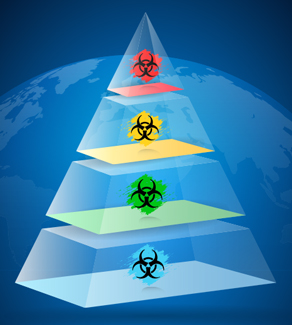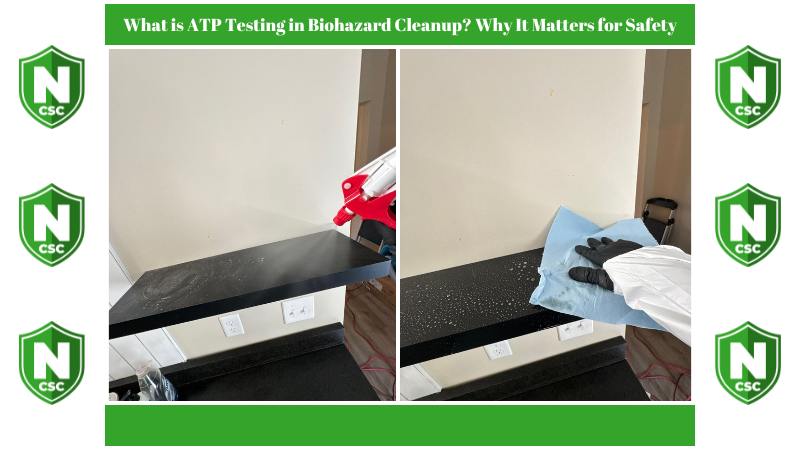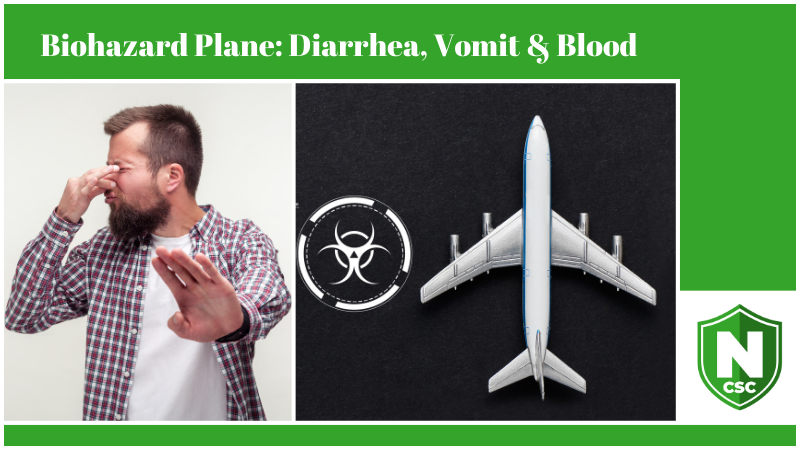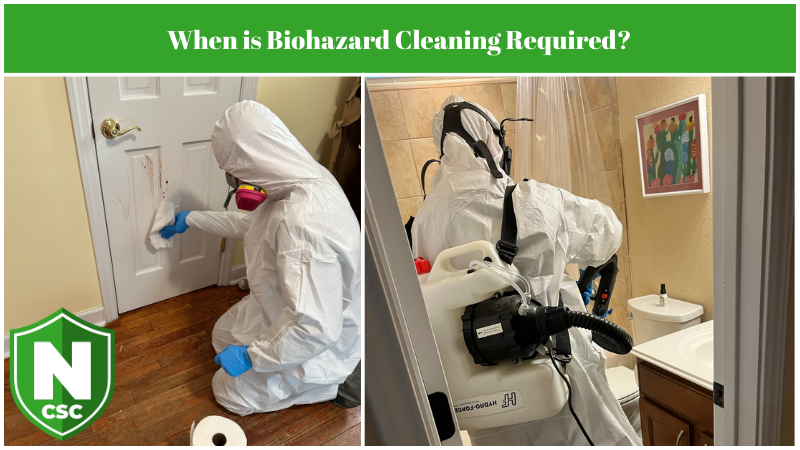What is a Biohazard?
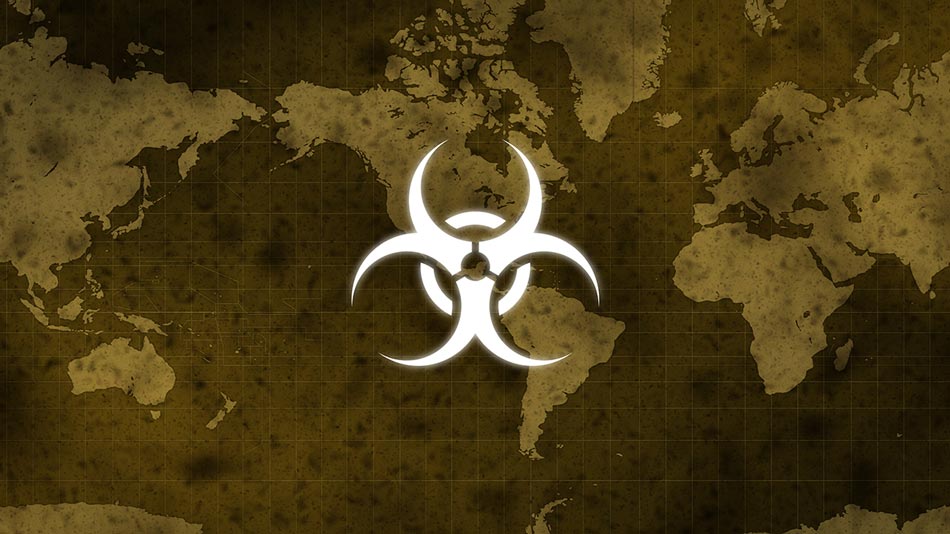
You likely recognize the biohazard symbol, and if you’ve ever been to a doctor’s office or hospital, you’ve seen it on red plastic bags and trash receptacles.
But what materials qualify as biohazards? What exactly goes into those labeled baggies, bins, and barrels?
Biohazard Definition
Simply put, biohazards are biological substances that endanger the health of living organisms.
Listed below are a few of the most common types of biohazards:
- Blood
- Sharps
- Bodily Fluids
- Animal Waste
- Microbiological Waste (found in labs)
- Pathological Waste (from surgeries)
Before breaking down these common types even further, it is best to understand the different levels of biohazards, and what they entail.
Levels of Biohazards
There are 4 levels of biohazards, which are measured 1-4 in terms of increasing risk.
- Biohazard Level 1 – Pose minimal threat, typically require only gloves and face covering. Includes Chickenpox, E. coli, and Bacillus subtilis.
- Biohazard Level 2 – Cause mild disease, usually transmitted through contact. Includes Lyme disease, HIV, and Hepatitis A, B, and C.
- Biohazard Level 3 – Cause severe and fatal diseases, but treatments exist. Include SARS-CoV-2, West Nile virus, and Malaria.
- Biohazard Level 4 – Cause severe and fatal diseases, no available treatments. Include Bolivian hemorrhagic fever and Ebola virus.
Biohazard Examples
Below are some common biohazard examples, along with detailed descriptions of each.
1. Blood
Bloodborne pathogens, which include bacteria and viruses, can remain in dried human blood for days or even weeks.
Significant blood spills can soak into sub-flooring and furniture, which must be removed and disposed of at biohazard waste facilities.
Improper disposal of biohazardous material can result in serious fines, at best; at worst, waste management workers can become ill from handling or breathing in infected blood.
Blood spilled at velocity—caused by gunshot, a serious fall, beating, bludgeoning, or cutting of a major artery—causes microscopic droplets to travel far beyond the initial trauma location.
Blood can enter HVAC systems, decorative finishing, fixtures, and other unexpected surfaces.
2. Organic Tissue
Unfortunately, car accidents, firearm-related trauma and death, and some industrial accidents leave behind more than just blood.
Bone, skin, hair, teeth, and organ tissue require careful detection, retrieval, and disposal.
It’s not up to ambulance staff or death investigators to collect residual human tissue when the patient or body is removed from the premises.
3. Feces & Vomit
Illness, trauma, and death may result in an area contaminated by fecal material and vomit. As can blood, human waste solids can contain deadly bacterial and viral pathogens.
Digestive fluids can permanently damage or destroy porous surfaces and textiles and leave behind noxious odors.
Diseases transmitted through contact with feces and vomit are very common, and are often the culprit behind contaminated food, and outbreaks at nursing homes, and daycare facilities.
4. Urine
Did you know that it’s a myth that urine is sterile? While it’s far less likely to contain an infectious disease, urine from infected persons can spread typhoid and urinary schistosomiasis.
The biggest issue with urine is its deadliness to property values, including sale prices and rentability. Urine odors are extremely difficult to remove, especially once it’s soaked into textiles and subflooring.
5. Pus
Burst abscesses or infected wounds release pus into the environment. Pus is the byproduct of the body’s fight against bacterial or fungal infections.
While pus itself typically only contains dead microorganisms, it usually contains blood and bloodborne pathogens. Large pus spills leave behind noxious and pervasive odors.
6. Airborne Pathogens
Thanks to the Covid-19 pandemic, the average person now knows how diseases can spread on droplets of saliva and nasal discharge.
Even still, the novel coronavirus is still not considered technically “airborne”, a description given to pathogens that can remain suspended in the air for a longer period of time, or easily travel far from the source of infection.
Either way, contamination affects hard-to-clean, out-of-the-way surfaces, textiles, and ventilation systems requiring CDC-recommended wipe-down protocols, special disinfecting foggers, and decontamination solutions that clean and sanitize textiles without causing damage.
7. Needles
Also called “sharps”, discarded needles can contain and, to a degree, preserve the viability of bloodborne pathogens.
They may also contain dangerous drugs. Illegally discarded sharps put sanitation workers at risk, and syringe and needle surfaces may have traces of blood left behind by the user.
8. Animal Droppings
Insect and pest infestations, as well as domestic pet waste, leave behind odors and harmful bacteria and viruses.
Some insect infestations leave behind trace blood or pathogenic droppings, and in extreme hoarding cases, animal carcasses require careful handling and removal.
Some pet rescues and kennels require deep-cleaning after an outbreak of diseases that are transmissible to people (zoonotic) or are deadly to other animals.
9. Mold
Fungal spores resulting from water damage or undiscovered body fluids can create serious respiratory diseases, especially among young children, the elderly, and those with weakened immune systems.
Mold may go undetected unless walls or flooring are removed, or a professional mold abatement technician locates it using thermal detection tools.
How to safely contain and decontaminate biohazards
Good personal hygiene and routine cleaning of work surfaces, kitchen appliances, restrooms, and flooring go a long way to protecting yourself from biohazard contamination, but outbreaks, crime scenes, accidents, unattended deaths, and hoarding situations require intervention.
In these cases, your best—and possibly most economical—solution is a professional biohazard cleaning service equipped with the skills and resources to safely clean, sanitize, and dispose of contaminated materials and surfaces.


